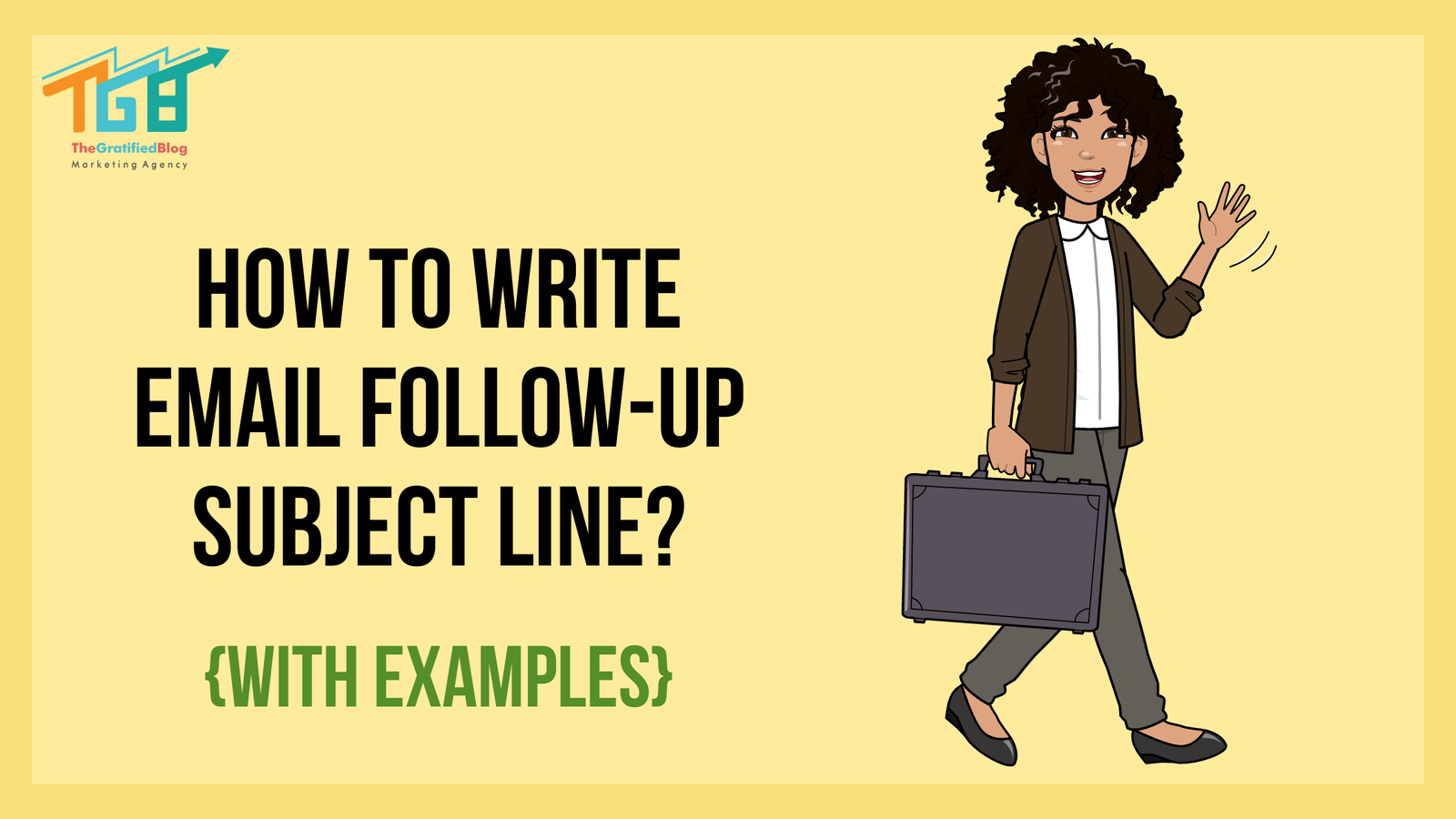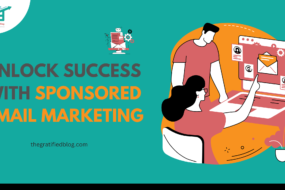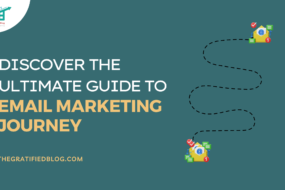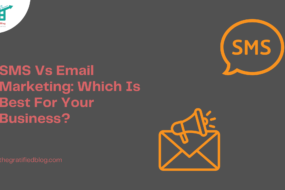
How do you create a ‘follow-up email subject line’? A subject line is like the title of an article, a key slogan of any ad, or a newspaper headline that helps the reader connect with the entire email. It is the first line that your reader sees after the sender’s name. A subject line should be precise, informative, and appealing.
What Is The Importance Of An Email Subject Line?
If an email has a catchy subject line, half of the recipients are more likely to open it. Email receivers will ignore your content if it isn’t helpful enough or appears spammy, just like an article headline or a book title. That being stated, a follow-up email subject line should concisely provide the relevant information.
You want your email to be something other than the 70% sent to spam based on the follow-up email subject line. This necessitates diligence and excellent content from new and existing businesses. Nobody desires their email to be relegated to the trash folder without the receiver viewing it.
Tips To Write An Impressive Follow-Up Email Subject Line
The most effective email marketing practice carries a perfect email subject line that gets more clicks from the target audience. A subject line is a disguise pitch that helps channel your brand seamlessly.
Below are some productive tips for writing the right subject line:
Personalize
According to research, personalizing your subject line only sometimes requires mentioning the recipient’s name; alternative methods have emerged. You can, for example, personalize emails with demographic information or give discounts based on previous purchases made by your customers. If you go above and beyond to provide a personal touch to your subject line, you can get over 27 percent views.
Informative
Smartphone use has skyrocketed as a result of recent technological developments. The majority of individuals now open emails on their phones. Mobile devices are easily accessible, making it possible for most people to check their email while on the road.
Email marketers should keep their subject lines under 40 characters to avoid being cut off in mobile inboxes. Furthermore, remember that many readers will not read an email immediately if it doesn’t catch their interest.
Create Urgency
You should make a genuine-looking urgent claim and avoid overdoing it. The “emergency” can be a limited-time offer in which you explain that you have little goods remaining for sale or that there is just a short time before the offer expires.
Question Your Audience
Curiosity is vital, but it is most effective in articles. Regarding the follow-up email subject lines, hit the subject line with a question and let the receiver click to view the answer underneath. Refrain from beginning a statement in the subject line and continue it in the body since this will be perceived as clickbait and may result in people ignoring your email or unsubscribing from your services. Here’s how to ask crucial questions:
Use Emojis
An emoji is a mirror image of your face and mood. It is a mix of conveying the right emotion and capturing attention. A smile to the recipient can change the perspective, increasing the chance of the mail getting more views.
Avoid Spammy Language
Avoid using aggressive or sales-like language and flashy formatting such as all caps or repeated exclamation points. These will place your email in the spam folder before the reader opens it.
Emails with the abovementioned issues can also be routed directly to the spam folder because they will immediately trigger spam filters from various mailbox providers. To avoid this, start with your topic line and offer your expertise and valuable information.
Before sending an email, marketers may use tools to analyze if the email looks spammy. With such tools’ email spam checker feature, you can immediately receive relevant tips on improving your email deliverability.
8 Best Follow-Up Subject Lines to Spark Interest
Sometimes, you get a call or have gone through rounds of emails with your prospects and still need to hear back from them. Yes, the process can get frustrating, and you can only do something about it. So, here are a few follow-up email subject lines to save your energy over anticipation.
A Compliment To Your Prospect Won’t Hurt
People enjoy hearing others compliment them and their work. As a result, offering your prospect a compliment in your follow-up email subject line can help you increase your open rate.
The critical thing to remember is that every compliment you give to a prospect should be sincere.
It will be clear if you are making things up. For instance, if you tell a prospect, “I appreciate your firm’s work ethic!” and then don’t include it in your template, it will be evident that you paid no heed to the details they shared. That’s even worse than not bringing it up at all.
Keep It Simple, Concise, And Be Creative
The goal is to deliver enough information to pique your prospect’s interest enough for them to open your email.
For example, if you mention your prospect’s or company name in the follow-up email subject line, they’ll know you’ve done basic research on them. In most circumstances, that is sufficient encouragement for someone to open an email.
You’re vying for your prospects’ attention in their inboxes. Because they are decision-makers, other cold emailers will be reaching out to them at the same time you are.
Adding some comedy to your follow-up is one approach to make it stand out.
Before giving humor to your line, ensure it’s appropriate for the environment and industry you’re in, as it runs the danger of making you appear unprofessional.
Optimization Of The Opening Snippet
If your prospect still needs to read or respond to your initial emails, there could be more to it than the subject line. Consider the preview sample of your email.
What exactly is the snippet?
The content from your email body appears in the inbox next to your follow-up email subject line. Snippets help support your subject line when you think your subject isn’t that engaging.
Use a personalized starting line in your emails, or add intriguing material to the beginning of your follow-up emails to ensure it influences your open and reply rates.
Even if your prospect goes over your subject line, your snippet could be the difference between opening and replying to your email.
Include Something Of Mutual Interest Or Connection
Continuing communication after meeting someone at a networking event or discovering shared interests, such as living in the same city, is an effective means of following up.
Writing a more engaging subject line than one demonstrating how much you share with your target is practically impossible. Still, there’s always the possibility that you discovered you had something in common after contacting your prospect. Include this in your initial email rather than waiting for a follow up.
For instance, You can begin with these lines,
- Writer to writer
- I met you at (any event you both attended)
- (Mutual contact) asked me to contact
These are effective because the follow up email subject lines are relevant to your prospect. If someone emailed you about a conference you attended or the city you live in, you’d open it almost 100% of the time.
Urgency Grabs Attention
Consider increasing the urgency if your email series needs to be opened or replied to. If your prospect has been putting off responding to you because they are too busy with other projects, a sense of urgency might be an excellent method to get their attention.
These are the instances of urgency in subject lines for follow-up emails:
- You don’t want to miss
- Need to be more interested in growing your business?
- Last date for registration
- Offer ends
- Final check-in
Right Metrics Matters
Optimizing for the wrong metrics can cause issues. If you were optimizing for open rates, you’d get the best results by employing clickbait subject lines that fool people into opening your email.
But what good does it do if you mislead your prospects into opening your email? A high open rate that does not result in conversations or sales earns no points.
This is not to say that measurements like open rates are meaningless. A low available rate suggests poor deliverability, an unqualified prospect list, failing subject lines, or a combination of the three. If your response rate falls, there could be a problem with the email message.
Instead of fiddling with hundreds of subject lines and sending a different one with each follow-up, focus on building a highly qualified prospect list and creating email templates that elicit responses from your target prospects.
Take A Subject Line Test
What works for someone else’s niche may work better for you and yours. Take instances like the ones given with a dose of skepticism. Something different may work best for your one-of-a-kind business. You can run A/B testing and experiment with variants until you’ve found your follow-up subject line that consistently performs well.
Here’s what you can do:
- Test a list of subject lines you want to use.
- An A/B test will sort your lines according to your prospects.
- Each test might contain around 100 prospects.
- Measure the results according to email campaigns.
- Find the ones producing the best outcomes.
- Repeat the process when you find yourself stuck in choosing a subject line.
Your two emails will be sent when you launch your campaign, and you’ll receive clear stats on which one works better.
However, don’t get too caught up with your follow-up email subject line. It is preferable to iterate quickly rather than spend days or weeks developing the right subject lines. In most circumstances, you must avoid junk terms and demonstrate some relevance to your prospect. Then you’re ready to go.
FAQs
Q1. What makes an effective follow-up email subject line?
A. Crafting an effective follow-up email subject line involves a delicate balance between capturing attention and providing clarity. It should be concise yet compelling, giving recipients a glimpse of the email’s content while sparking curiosity. Including a personal touch or reference to your previous interaction can also enhance its effectiveness.
Q2. How can I tailor a follow-up email subject line for different situations?
A. Tailoring follow-up email subject lines depends on the context of your interaction. For professional settings, maintain a formal tone and reference specific topics discussed. In a more casual or networking scenario, consider incorporating a touch of personal connection or a shared interest to make the subject line more engaging. Adapting to the specific nature of your relationship with the recipient is key.
Q3. Are there any best practices to increase open rates with follow-up email subject lines?
A. Yes, several best practices can boost open rates for follow-up emails. Keep subject lines between 6 to 10 words for optimal readability. Use action-oriented language to prompt engagement, and consider adding a sense of urgency or exclusivity when appropriate. A/B testing different subject lines can also help identify what resonates best with your audience, allowing you to refine your approach over time.
Conclusion
If you find it challenging to write intriguing follow-ups, we hope these lines have made your job easier. The bottom line is that the subject line you’ll use will always be related to the use case, so you need to contact someone. Remembering this will allow you to write relevant emails to the person you’re getting.
If you still have any question’s, related to the blog, then feel free to leave your questions in the comment section. We will be happy to answer you
Thanks for reading 🙂
Also read: A Complete Guide To know How To Write A Email Cover Letter?








No Comments